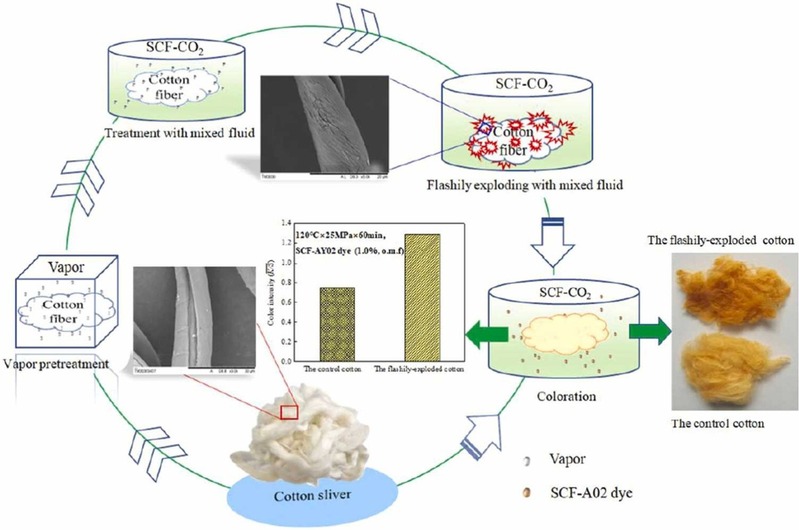Supercritical coloration performance of cotton fiber after a flash explosion with subsupercritical carbon dioxide and vapor mixtures
Xinxin Cao, Chong Cai, Fan Wang, Ze Pan, Jiajie Long *
College of Textile and Clothing Engineering,National Scientific Research Base for Waterless Coloration with Supercritical Fluid (China Textile Engineering Society), Jiangsu Engineering Research Center of Textile Dyeing and Printing for Energy Conservation, Discharge Reduction and Cleaner Production (ERC), Soochow University, Suzhou 215123, China
Textile coloration with supercritical fluid of carbon dioxide (SCF-CO2) has become an advisable choice in textile industry, due to its numerous environmental advantages over the conventional methods. However, the coloration of dry cotton substrate in SCF-CO2 is still under research. Thus, this work aims to investigate the coloration performance of dry cotton fiber which was previously treated with a novel method by utilizing a flash explosion in the mixed fluids of subSCF-CO2 and vapor to modify its supermolecular structure. The influences of coloration parameters, such as system temperature, pressure, dosage of dye, and coloration duration on the uptake and fixation behaviors of reactive disperse yellow SCF-AY02 dye on the flashily-exploded cotton substrate were explored. The experimental results show that the flash explosion with the mixed fluids can significantly improve cotton dyeability in SCF-CO2, and the system temperature and pressure had more pronounced effects on the quantitative adsorption amount and the fixation efficiency of the SCF-AY02 dye than other parameters on the flashily-exploded cotton substrate. Moreover, a fast improvement in the dye uptake behaviors was also observed within a relative short duration from 30 min to 60 min. Furthermore, the improved dyeability of the flashily-exploded cotton in SCF-CO2 was further validated and supported by the investigations of its morphological and chemical structures with scanning electron microscopy (SEM) and Fourier Transform Infrared Spectroscopy (FT-IR) and wide-angle X-Ray Diffraction (XRD) analysis. Additionally, a comparable value or very slight alteration in the tensile strength of the flashily-exploded fiber was also achieved in comparison with the control one. It is hopeful that this novel flash-explosion technology with the mixed fluids potentially benefits and can be widely employed to enhance the coloration performances of different natural and/or synthetic fibers in SCF-CO2 in a dry and physical modification way.

https://doi.org/10.1016/j.indcrop.2024.118255
